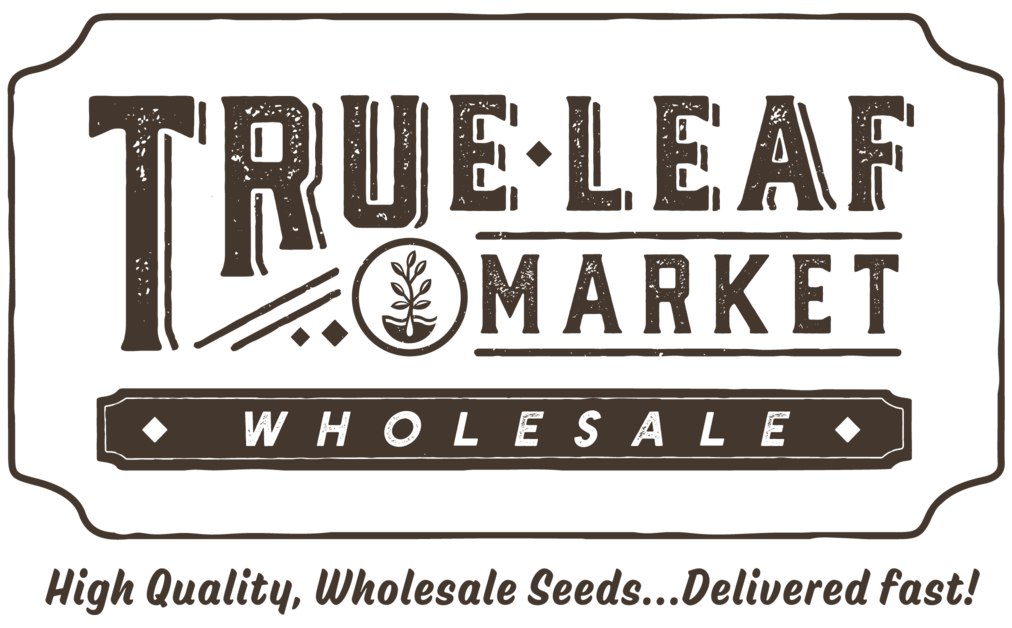Growing Heirloom Cherokee Purple Tomato Vegetable Garden Seeds
How to Grow Cherokee Purple Tomatoes from Seed
Tomato is a warm weather crop best if started indoors about 6-8 weeks prior to final spring frost. Plant 2-3 seeds 1/4" deep per cell in fertile, humusy, and well-drained soil with a pH of 6.0-6.8. Beefsteak seeds germinate in 5-14 days, transplant best starts to 1 per pot or 18-36 inch apart in the garden. Ideal in container gardening. Before sowing, know whether the seed is determinate or indeterminate, as each will exhibit different habits. Determinate varieties mature to a predetermined size, producing its fruit all at once with only a minor need for staking. Indeterminate varieties grow indefinitely through the season, producing non-stop fruit while requiring heavy support. Cherokee Purple is an indeterminate tomato crop.
Cherokee Purple tomato seeds grow thick, indeterminate vines. While the vines are sturdy, Cherokee Purple tomato plants grow healthier tomatoes when staked or caged so that the heavy fruit stays off the ground and the plant can enjoy proper airflow.
Sensitive to frost, like all tomato plants, Cherokee Purple tomato seeds should be started indoors 6 to 8 weeks before your last frost date. Once hardened off, the seedlings should be planted in rich, well-draining soil that is slightly acidic to neutral.
Heirloom Cherokee Purple Tomatoes in the Vegetable Garden
Tomato is the quintessential staple of summer gardening and arguably offers the most seed diversity among all seasonal fruits. Available in every possible color, shape, and size, tomato is a high-heat and full sun favorite that thrives from container and patio gardening. Along with cucumber and summer squash, the tomato plant is one of the most productive, hardy, and heavy fruiting crops of the season.
Cherokee Purple tomatoes are among the most popular heirloom tomatoes for slicing and eating fresh, yet they can also be cooked and used to make soup, stews, and more thanks to their meaty flesh and complex flavor that balances sweetness and acidity.
Harvesting Cherokee Purple Tomatoes
Smaller varieties such as the cherry are ready to harvest at about 80 days from sowing while larger varieties like the beefsteak may require a few extra weeks. Although vine-ripened fruit is always preferred, tomatoes can just as easily be harvested early and ripen indoors by being stored in a paper bag or box along with a banana for its ethylene gas. Ripest tomatoes may be pulled from the vine by hand, while more firm ones should be clipped with shears.
About Cherokee Purple Tomato Seeds
Solanum lycoperscium. (90 Days). Indeterminate. Regular leaf foliage.
Cherokee Purple was gifted to heirloom tomato enthusiast Craig LeHoullier by J. D. Green of Tennessee. Mr. Green stated that he received them from a neighbor who said the tomato variety was 100 years old and was according to the neighbor grown by the Cherokee Indians. Listed in the Seed Savers Exchange (SSE) Yearbook 1991 edition.
The rich pink and purple hues of Cherokee Purple tomatoes make these popular heirloom tomatoes a great choice for creating showstopping appetizers, such as caprese salad.
Recommended by the Following State Universities or Ag Extension Offices as a variety that performs well for their region. TX, FL
Cherokee Purple review...
"Cherokee Purple tomatoes are beefsteak in style, with green "shoulders" across the top. They are also notable for having a dense, juicy texture, with small seed locules irregularly scattered throughout the flesh. The comparatively dark interior color is enhanced by the tendency of the seeds to be surrounded by a green gel."
Mother Earth News says about Cherokee Purple Tomatoes...
"So-called black tomatoes are really purplish, and their complex, smoky flavor often is associated with these dark fruit pigments. Although it's a modest producer under the best conditions, "ËœCherokee Purple" (80 days) is quickly forgiven by thousands of gardeners who are addicted to its fruity, yet rich, tomato flavor."
Listed on Slow Foods Ark of Taste
The US Ark of Taste is a catalog of over 200 delicious foods in danger of extinction. By promoting and eating Ark products we help ensure they remain in production and on our plates..."




